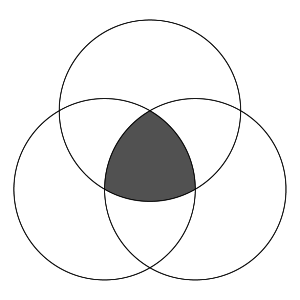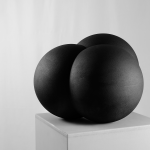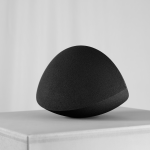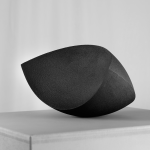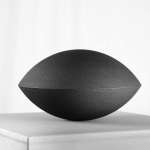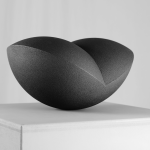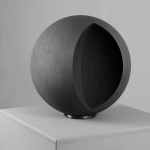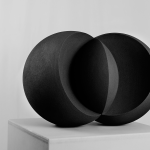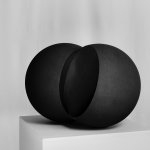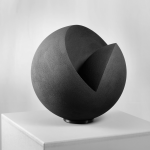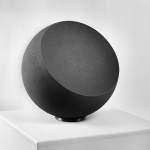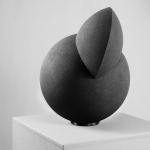Traditional artists are turning to using 3D printing in their work, and making some very interesting hybrid art — that is, art made using both 3D modeling and traditional hand finishing techniques. As I recently reported, 3D sculpture seems to be a hot item, especially when it comes to representing classical geometric forms. Italian artist Dario Santacroce decided to move from traditional sculpture to 3D printing for his ‘Spherical Creations’ series when he realized that his vision for perfect forms could not be accomplished through traditional means.
According to Santacroce:
“Perfect forms, said the ancient Greek philosopher Plato, do not exist in the physical world. They reside as abstract ideas, pristine and unchanging, in a place beyond heaven. The objects we perceive are mere shadows mimicking these pure forms.”
“It is the first time these works and this technique will be shown to the public, so if you are wondering – yes this is a big deal,” Santacroce told 3DPrint.com. “Especially since with this new technology I challenge Plato’s ‘theory of forms’ which states that perfect form can only exist in the realm of the mind. So I set out to make the most perfect spheres – is this possible?”
- Spherical Creation II, manufactured sandstone (28 x 26 x 30 cm)
- Spherical Creation I, manufactured sandstone (48 x 49 x 30 cm)
- Spherical Creation III, manufactured sandstone (15 x 15 x 25 cm)
- Spherical Creation IV, manufactured sandstone (15 x 15 x 26 cm)
- Spherical Creation V, manufactured sandstone (26 x 26 x 15 cm)
- Spherical Creation VI, manufactured sandstone (17x 26 x 30 cm)
- Spherical Creation VII, manufactured sandstone (30 x 45 x 30 cm)
- Spherical Creation VIII, manufactured sandstone (28 x 30 x 30 cm)
- Spherical Creation IX, manufactured sandstone (30 x 45 x 30 cm)
- Spherical Creation X, manufactured sandstone (30 x 38 x 30 cm)
- Spherical Creation XI, manufactured sandstone (24 x 38 x 30 cm)
- Spherical Creation XII, manufactured sandstone (45 x 30 x 30 cm)
- Spherical Creation XIII, manufactured sandstone (30 x 30 x 30 cm)
- Spherical Creation XIV, manufactured sandstone (23 x 30 x 30 cm)
- Spherical Creation XV, manufactured sandstone (37 x 30 x 30 cm)
Santacroce has been sculpting for a long time, starting his first apprenticeship when he was just 16 years old. His previous works are beautiful creations carved from stone. His bold decision to break away from traditional sculptural techniques was both practical and philosophical. After considering using glass, stone and ceramics, he decided to use a special 3D printing process because he felt that it brought a deeper meaning to his work. CAD software and additive manufacturing allowed him to achieve a greater degree of precision than would have been possible by utilizing conventional striking tools or even high-speed diamond rotary blades.
“I finally found my answer in a special form of sand,” says Santacroce, seen at right and below hand-finishing his pieces with 3D printed shaping tools. “Investment Cores are made of pure silica sand and a very small amount of binder. This material is traditionally used to create the master molds for casting objects in metal. Investment cores strike me as a lovely metaphor to use in tandem with Theory of Forms in that cores are not the final piece in and of themselves, as their sole purpose is to facilitate the production of multiples. As a signature of contemporary time, cores are formed in a high tech process in a series of minute layers. Once manufactured into the desired shape, the look and feel is the one of dark sandstone; a material that does not polish, that does not reflect the world on its surface but at the same time allows it to reflect into the world.”
After prototyping his sculptures in FDM using a MakerBot Replicator 2X, he turned to a company in Germany to make the sandstone prints, which were then shipped to his studio in France. While the first prints were true to the 3D model files he sent, they did not hold up well in the real world, as is often the case with 3D printing.
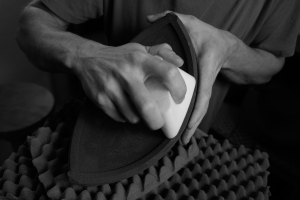 Santacroce had to thicken his prints at the edges, so they would survive being shipped by truck from Germany. That change required him to create an additional post-processing technique to smooth these raised areas into his perfect forms. Interestingly, he had to model and print special shaping tools for the sandstone prints, combining 3D printing with hand finishing. The tools were created as negative forms of the original sculptures, thus they allowed him to precisely sand the prints to the final desired shape.
Santacroce had to thicken his prints at the edges, so they would survive being shipped by truck from Germany. That change required him to create an additional post-processing technique to smooth these raised areas into his perfect forms. Interestingly, he had to model and print special shaping tools for the sandstone prints, combining 3D printing with hand finishing. The tools were created as negative forms of the original sculptures, thus they allowed him to precisely sand the prints to the final desired shape.
Santacroce will be showing his ‘Spherical Creations’ series at Galerie Eulenspiegel in Basel, Switzerland from April 7th to May 14th. You can see his process clearly illustrated in the short film, by Hugo Clouzeau, below:
Subscribe to Our Email Newsletter
Stay up-to-date on all the latest news from the 3D printing industry and receive information and offers from third party vendors.
You May Also Like
NSF Awards Kentucky $1M for Advanced Manufacturing
The National Science Foundation has awarded a $1 million grant to the University of Louisville for the Advancing Manufacturing and Building Construction Technologies (NSF AMT) project. This initiative is part...
3D Printing News Briefs, May 11, 2024: 3D Printed Stent, Tower, Sculptures, & More
We’re starting off with medical research in today’s 3D Printing News Briefs, as researchers in Korea used CT images and 3D printing to fabricate an educational simulator for a mastoidectomy....
3D Printing Unpeeled: Wind Turbines, Probiotics and Lenses
TPI Composites, ORNL and Ingersoll Rand are working to make wind turbine tooling segments that can be 18.3 meters long. These elements also include resistive wires that help keep the...
Tethon 3D Releases Cost-effective Bioprinter
Tethon 3D, known for its ceramic-loaded DLP materials, custom resins, and DLP 3D printers, has recently released a bioprinter. Vat polymerization printers like DLP systems have been widely used by...



